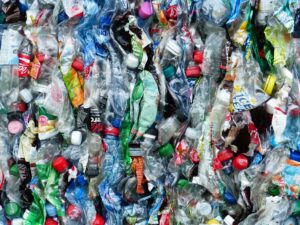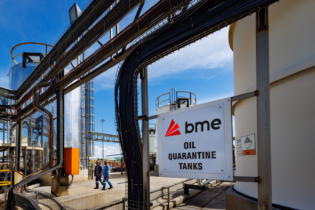With the introduction of the extended-producer responsibility (EPR) regulations, a wider industry adoption of recyclate replacing raw materials, and several voluntary agreements that promote material circularity, all eyes are on the South African plastics recycling sector.
With a 43.2% input recycling rate, according to the latest industry research, South Africa has managed to retain a stable recycling economy as compared to previous years, despite hampering market circumstances including Covid-19 lockdowns. With the EPR regulations and other mandatory and voluntary mechanisms, South Africa is now looking to grow the plastic packaging recycling rate and recyclate market altogether. “The biggest indicator for future market growth has been the growth in memberships for producer responsibility organisations (PROs) due to the mandatory EPR regulation requirements, as well as the renewed interest in recycling options by all social partners” says Patricia Pillay, Chief Executive Officer at Polyco PRO NPC (Polyco), the largest PRO for plastic packaging in South Africa. “Our membership base has grown from 14 polyolefin plastic-packaging converters to more than 600 member companies from across the plastics value chain, in the space of 10 months.” Polyco facilitates the growth of the plastic recycling market through education and awareness around recycling, investing in recycling infrastructure, and promoting the end-use development for the use of recyclate instead of virgin material where possible. According to EPR regulations, PRO’s like Polyco must work closely with packaging producers and brand owners to ensure that packaging is recycled post-consumer use. While EPR has in the past been a voluntary agreement in South Africa, it has now become a prescribed mandatory regulation for all producers since November 2021.In 2020, South Africa recycled 312 600 tonnes of plastics back into raw materials. Of this, 296 480 tonnes were converted into new products for the South African market, and 16 120 tonnes were exported to converters in other countries. Of the total volume of plastics that were recycled, 64% was sourced from the post-consumer stage, where the rest was sourced directly from industry where formal recyclers bought recyclables directly from industry and business.
“A key focus for us at Polyco is collaboration, both with industry, companies and organisations throughout the plastics recycling value chain as well as government. Together we can make a difference in investing in the most effective collection methods including educating consumers on separation at source, researching and sharing best practices on recycling solutions for all plastic material streams as well as encouraging design for recyclability when developing plastic packaging products.” “As we start to see the positive influence of EPR regulations, we need to continue to focus on consumer education and involvement,” says Pillay. “The level of public awareness towards both the environmental and economic benefits of recycling plastic is increasing, but there is always room to get consumers more involved. We have noticed that our recycling initiatives have been receiving more interest year-on-year. An example of this is that our Packa-Ching collection project has collected over 6 million kilograms of used recyclable packaging material from over 60 communities across South Africa and paid out over 5 million rand to people in those communities in return for their recyclables; a segment of the population that beforehand were most likely not recycling their plastic waste.” Packa-Ching was also awarded the Eco-Logic gold award for its initiative’s success, which is clear evidence that when communities fully engage in a programmes everyone is able to see effective results. “The indicators for growth in the recycling market are evident, there is a good degree of product and packaging design innovation, better recycling infrastructure and more public interest. Our recommendation from a public perspective is to keep waste types separate – make sure to separate your used recyclable packaging from general household waste. This enables greater efficiency for the collectors and recyclers and creates a greater likelihood of your used plastic packaging being recycled,” concludes Pillay.







